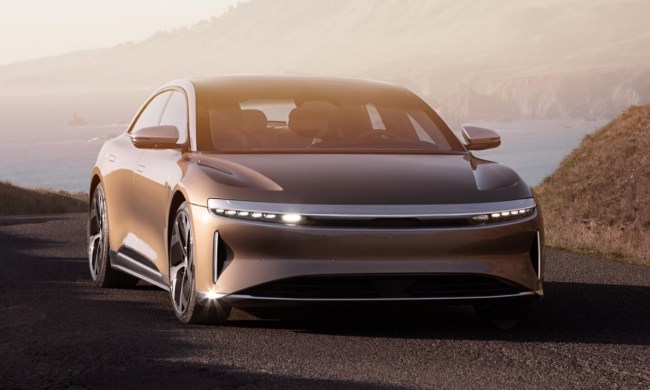
But while it may baffle some car fans, the FF is here to stay. It sits at the top of Ferrari’s front-engined, V12 touring car range, maintaining a hierarchy that hasn’t changed in a couple of decades. And a facelifted version of the FF will appear soon, as Ferrari’s marketing vice president, Enrico Galliera, confirmed in a recent interview with Indian Autos Blog.
Some styling changes are likely in store, and perhaps a new name to reflect the car’s updated status. What won’t change is Ferrari’s choice of powertrain. While the carmaker is using downsized, turbocharged V8 engines in other models, the FF will reportedly stick with a naturally-aspirated V12. This follows Ferrari’s previously-discussed strategy of only turbocharging eight-cylinder engines. The carmaker has said it will consider more V12 hybrid powertrains like the one used in the LaFerrari, but it’s too early to tell if the FF will get one.
It’s unclear whether the engine will be punched out beyond the current 6.2 liters, but an increase in power is likely. The current FF puts out 651 horsepower and 504 pound-feet of torque. That’s enough to get it from 0 to 62 mph in 3.7 seconds, and on to a top speed of 208 mph, according to Ferrari. Those figures are already remarkable, considering that the current FF weighs a portly 4,145 pounds.
The timing for an FF facelift does seem right. Just before it initiated plans to spin off the hallowed Italian brand, Fiat Chrysler Automobiles put Ferrari on track to introduce one new or updated model each year, a somewhat steadier pace than the carmaker has adhered to in the past. Now that Ferrari has turned the California and 458 Italia into the California T and 488 GTB, the FF is the only model in its lineup still awaiting an update. That means it should be next.
While nothing has been confirmed so far, an unveiling at the 2016 Geneva Motor Show in March seems logical. Look for more information on the updated Ferrari FF in the coming months.


